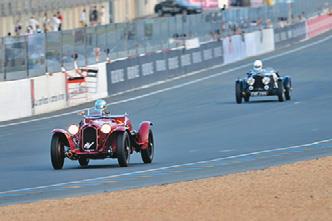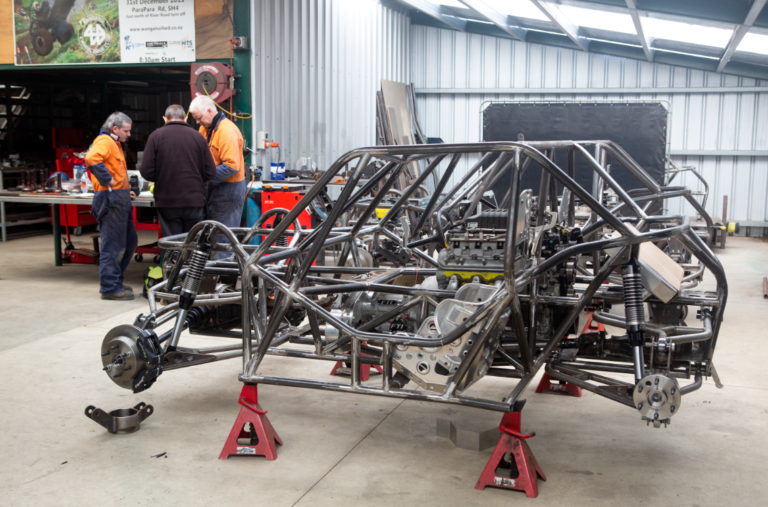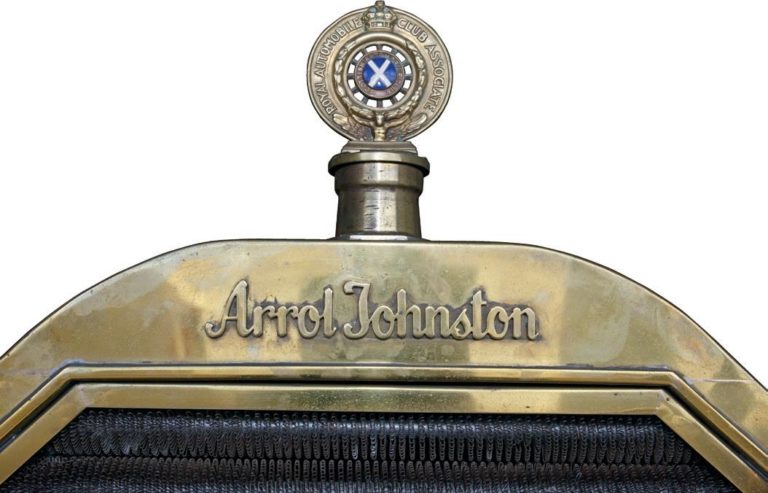By Jude Woodside
Photographs: Jude Woodside
Michael Pickens, Midget champion for 2014, kits up in his sprint car
Last-minute tuning
First run on the track
Sprint car racing
The Shed went along to a speedway meeting at Western Springs one wet December night, to savour the thrills, spills and excitement of the racing.
It began quietly, under a looming black sky. The crews assembled in the pits preparing the cars, tuning and adjusting. The semi-sweet smell of ethanol, the racing fuel, hangs in the air, humid from the unseasonal rain clouds that threaten to burst at any time. Drivers and crews greet each other and exchange pleasantries as they set up. There is a convivial and collegial attitude among the crews; though fiercely competitive on the track, all cooperate off the track, sharing ideas and chatting.
The drivers are kitting up, climbing carefully into their custom seating and buckling into the five-point racing harnesses, which are then cinched tight before they have their helmets handed to them like knights preparing for the joust.
The allusion to knights and jousting is apt. Like knights in armour, the drivers especially of the sprint cars have very restricted vision. They can peer through the grille in front and can see a bit to the left but their right-hand vision is blocked by a wing and within the confines of the cockpit—with helmet and neck brace in place—they have very little opportunity to turn their heads. To make things worse, other cars are flinging up dust and mud that also helps to clog their vision.
The first run-through is for the drivers to get the feel of the track and check that the cars are set up. The call goes out and cars start being pushed to the marshalling area to wait their turn to get on the track.
Clods of thick, sticky clay are flung up through the wire fence to splatter the spectators. The crackle of high-performance engines rends the air as the driver’s test track and their cars in a single-file parade. After only a few laps the sprint cars, the big boys on the block, head back to their pits in single file for final tuning. The cars are covered in gobs of sticky red clay that the pit crews are feverishly cleaning off.
A casualty
Emergency repairs
Midgets
Meanwhile, the midgets are buzzing and the first heats are starting. There are three classes of midgets:
-
F2 Midget, a new budget class for new drivers limited to a two-litre, four-cylinder production engine;
-
TQ (Three-quarter) midget with an engine limit of either 917cc with two valves per cylinder or 762 cc with three valves per cylinder; and
-
Midgets with 3.25 litre (200 cubic inch) engines.
The TQ class and up use specialist engines especially designed for this class of racing. The sprint cars are a bigger breed of vehicle, sporting 800 hp, 410 cubic inch (6770 cc) V8 motors, custom-built. The midgets use a standard chassis, many of which are built by Buckley Systems Racing, owned by Bill Buckley who, coincidentally, also runs the track.
The sprint cars and the midgets are little more than motor and wheels. The cars are mechanically quite simple with no clutch, starter or gearbox. The engine is directly coupled to the differential and the wheels. The enormous wings on the sprint cars can be adjusted hydraulically by the driver for more down-force and thus better traction. The idea is to help prevent the cars from becoming airborne.
The wheels are different sizes with the right-hand wheels larger than their opposites to allow for the anti-clockwise direction of travel at the track. Tuning involves setting the offset of the wheels and adjusting the tyre pressure the pit crews are constantly checking and adjusting the tyres.
One heat of the TQ midgets is underway. An accident and car careers into a wall and ends on its side. The race stops while the safety officials clear the track and then begins again.
This time there is an even bigger crash on the first corner as two cars touch and the collision sends one cartwheeling in the air to collide with several others. Carnage. But the safety officers deal with it calmly and efficiently and no one is hurt, although several cars look like their night might be over early.
The midgets are returned to their pits and the repairs get underway. Teams carry a full set of spare parts including axles and spare wheels and tyres and the pit crews are adept at replacing parts on the fly. Wheels are changed and bent axles and steering rods hurriedly replaced. There is always the next race and the pressure is on to get the car to the start line.
The last heat of the sprint cars ends with one car spectacularly up against the fence at the far side of the track. The rain has started to fall in a drizzle that makes the track slick and the road wet. The damaged car is carried back on a crane just like an injured soldier and immediately the mechanics swarm around it assessing the damage and beginning to strip the damaged parts.
The night closes in, as does the weather. The racing is cancelled. This is a dry-weather sport and racing at these speeds is dangerous on a wet clay track. The spectators gather round to watch the furious action of the pit crews in the rain as the other crews sign autographs and begin to pack up.
A professional approach
Despite appearances, the speedway races are amateur. The crews—even those belonging to the sprint cars—are possible only through sponsorship; many of them are volunteers who have been coming back to the track on race day since their childhoods. Despite the speed and the regular crashes, the sport is remarkably safe, the harnesses, roll cages, helmets and neck braces and the safety crews at the track mean injuries are few and usually minor. Speedway is a passion for all those involved from the spectators to the dedicated crews and drivers so many of whom grew up with it from childhood and it’s still great family entertainment.
Running repairs



